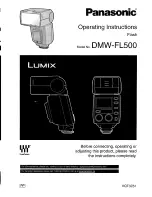
xiX - Technical Manual Version 1.3
84
4.2.4.
Image Data Output Formats
All modes are provided by the xiAPI or standard interfaces using the xiAPI (please note
Each of xiX cameras supports several Image Data Output Formats.
Mode
Description
RAW8
Raw sensor data, 8 Bit per pixel, single channel
RAW16
Raw sensor data, 16 Bit per pixel, single channel
10 or 12 Bit sensor output (LSB) with bit-shift up to 16 Bit
MONO8
Intensity output, 8 Bit per pixel, single channel
MONO16
Intensity output, 16 Bit per pixel, single channel
RGB24
RGB filtered output, 24 Bit per pixel, 3 channels Sequence: [Blue][Green][Red]
RGB32
RGBA filtered output, 32 Bit per pixel, 4 channels, Alpha channel equals 0. Sequence:
[Blue][Green][Red][0]
RGB_PLANAR
RGB filtered output with planar-oriented channels. Format: [R][R]...[G][G]...[B][B]...
FRM_TRANSPORT_DATA Data from transport layer (e.g. packed). This format is optimal when an efficient storage and
later (offline) processing is required.
Format is defined by XI_PRM_TRANSPORT_PIXEL_FORMAT
table 4-1, image formats,
Note1: For color modes RGB32 and RGB24 the image from sensor needs to be pre-processed (de-bayering). CPU load is higher
in these modes. Setting this parameter will reset current region of interest. RGB24 is being processed from the RGB32 by
removing the unused Alpha channel creating a slightly higher CPU load than the RGB32 format.
Note2: The color filtering (de-bayering) relies on the interpolation of adjacent pixels to create pixel in the target image. Pixels
on the edges of the image are missing adjacent pixels and therefore cannot be used for the interpolation process. The result is a
target image that is smaller than the source image (4 pixels on all sides).
Note3: For most formats the transport data can be packed. 12-bit pixel bit depth transfers only 12bit per pixel compared to 16bit
per pixel when the data are not packed. In case of packed format, the CPU load is higher due to unpacking of the image data.
Available bandwidth is however used optimally.
















































